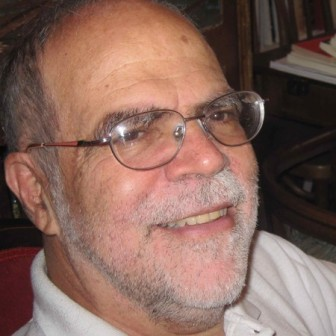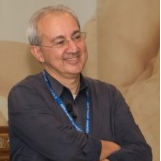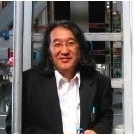New Trends in Quantum Complex Matter
A special issue of Condensed Matter (ISSN 2410-3896).
Deadline for manuscript submissions: closed (15 August 2018) | Viewed by 10447
Special Issue Editors
Interests: synchrotron radiation research; protein fluctuations; active sites of metalloproteins; origin of life; selected molecules in prebiotic world; quantum phenomena in complex matter; quantum confinement; superstripes in complex matter; lattice complexity in transition metal oxides; high Tc superconductors; valence fluctuation materials
Special Issues, Collections and Topics in MDPI journals
2. CNR - Istituto Struttura della Materia and Elettra-Sincrotrone Trieste, Basovizza Area Science Park, 34149 Trieste, Italy
3. RICMASS - Rome International Center for Materials Science – Superstripes, Via dei Sabelli 119A, 00185 Roma, Italy
Interests: correlation phenomena in X-ray absorption spectroscopy; X-ray absorption in elements of geophysical interest; dust and aerosol characterization; ultra-trace detection for indoor and outdoor environmental studies
Special Issues, Collections and Topics in MDPI journals
Interests: muon spin relaxation spectroscopy MuSR; neutron scattering; strongly correlated systems; unconventional superconductivity; novel magnetism; spin fluctuations and excitations in random magnetic systems, such as spin glasses and fractal spin networks
Special Issues, Collections and Topics in MDPI journals
Special Issue Information
Dear Colleagues,
On behalf of the Organizing Committee, we are pleased to announce the international QCM2018 conference which will be held in Rome, Italy, 11–15 June, 2018. We cordially invite you to participate in this conference, and all presented papers will be invited to be published in a joint Special Issue (https://www.mdpi.com/journal/condensedmatter/special_issues/QCM_2018). However, we also encourage other contributions from the broader community, and this sister Special Issue is reserved for contributions which cannot be presented at the conference, on the following topics. Note that the Editorial Office will merge the publications of these two Special Issues into one printed book after completion.
Correlated Electronic Systems:
- unconventional superconductivity
- novel magnetism
- Mott transition
- quantum criticality
- multi-band Hubbard model
- Lifshitz transitions
Nano Science:
- graphene
- TMDC
- QHE
- Topological
- 2-D materials
- Fano resonances
Spintronics:
- Skyrmions
- Itinerant electron
- Magnetism
- Spin current
- Magnetic memory
Cold Atoms:
- Feshbach Resonance
- Hubbard Model
- BEC-BCS crossover
More detailed information about the conference could be found at: https://www.mdpi.com/journal/condensedmatter/events/7005
Register for the conference, please click: http://www.superstripes.net/quantum-complex-matter-2018
Prof. Antonio Bianconi
Prof. Dr. Augusto Marcelli
Prof. Dr. Yasutomo Uemura
Guest Editors
Manuscript Submission Information
Manuscripts should be submitted online at www.mdpi.com by registering and logging in to this website. Once you are registered, click here to go to the submission form. Manuscripts can be submitted until the deadline. All submissions that pass pre-check are peer-reviewed. Accepted papers will be published continuously in the journal (as soon as accepted) and will be listed together on the special issue website. Research articles, review articles as well as short communications are invited. For planned papers, a title and short abstract (about 100 words) can be sent to the Editorial Office for announcement on this website.
Submitted manuscripts should not have been published previously, nor be under consideration for publication elsewhere (except conference proceedings papers). All manuscripts are thoroughly refereed through a single-blind peer-review process. A guide for authors and other relevant information for submission of manuscripts is available on the Instructions for Authors page. Condensed Matter is an international peer-reviewed open access quarterly journal published by MDPI.
Please visit the Instructions for Authors page before submitting a manuscript. The Article Processing Charge (APC) for publication in this open access journal is 1600 CHF (Swiss Francs). Submitted papers should be well formatted and use good English. Authors may use MDPI's English editing service prior to publication or during author revisions.







